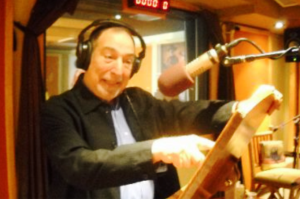By Dick Orkin
“Making the text your own is the key to public speaking, acting and voice over work,” said Patsy Rodenburg.
Patsy is a British voice coach, author, and theatre director. She is the Head of Voice at the Guildhall School of Music and Drama in London, and the Director of Voice at Michael Howard Studios .
What she means is that your performance should not reflect the sound of your “reading” someone’s words but “conversationally” in a dialogue that sounds like your own own words interacting with another person.
Even in the case of single voice piece of copy (or what may be called a monologue) your vocal style or intonation, the listener should receive the distinct impression you’re speaking to them or an “other.”
An effective, emotionally compelling piece of copy that your “speaking” is, at its best, a story.There is simply not a story without an other, even though you can’t hear their reply.
“Who am I talking to?” or “What kind of response do I want from the other?” “How am I trying to persuade the other?
“How are they trying to resist or oppose my want?
“How might I change their life or my life for the better, if I succeed with my persuasive argument,
proposition or presentation?”
If you can establish answers to these questions—and hopefully do it quickly in a competitive setting—you are building tension and drama and, when that happens, you have constructed a story worth hearing.
“The story is everything,” said respected advertising teacher Dick Wasserman. “In fact,” he says, “at bottom, effective advertising is effective storytelling.”
From “The New Art of Advertising Performance: Finding Your own voice” by Dick Orkin.
Copyright Dick Orkin 2014


